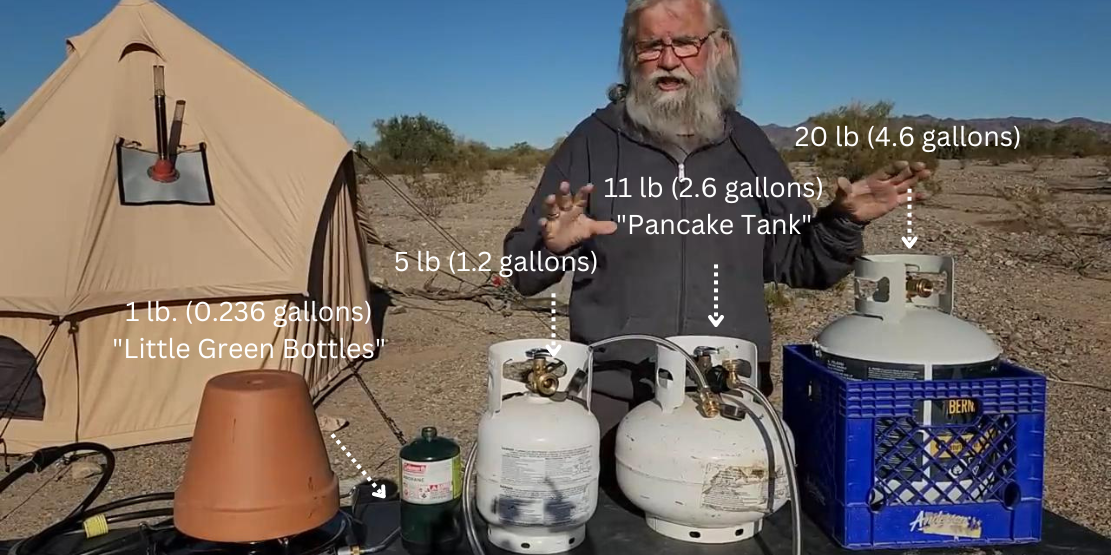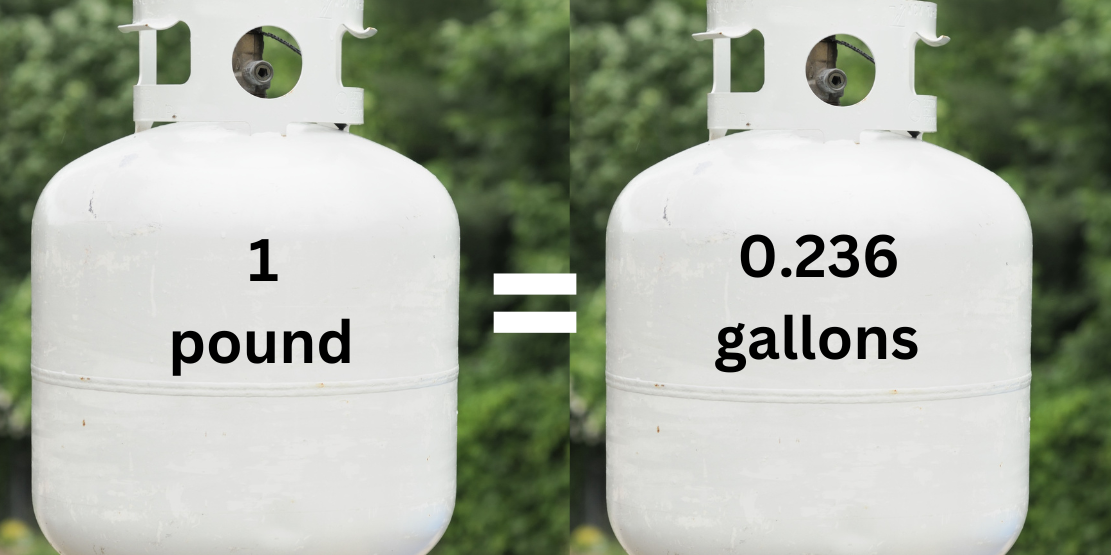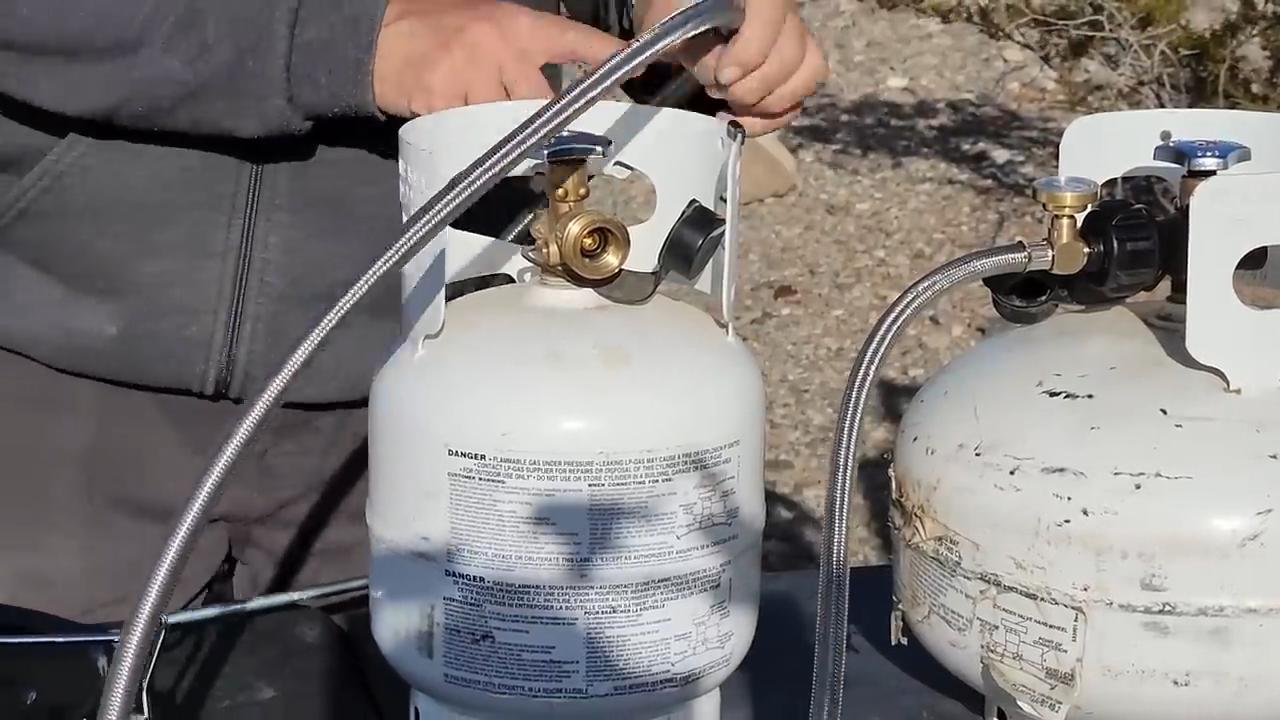
MANY OF YOU KNOW ALL ABOUT PROPANE tanks, so I can tell you nothing new about them. But there are a surprising number of people who have lived their lives in houses and never done anything with a propane bottle. So when you move into a car, van, or RV, you’re surprised by how much they cost, their size, and how to use them. I want to walk through all that, make this really simple for you, and give you a broad overview.
Different Sizes
We are all familiar with the 1 lb. little green bottles. Many of us buy these because they are easy to use and aren’t all that expensive. The 20 lb. refillable propane tanks are commonly seen with backyard grills. They are big, and if you’re in a car, this really isn’t an option for you. There are other sizes, though, and some might work well for you and save you a lot of money.

- 20 lb (4.6 gallons) tanks are commonly seen at tank exchange locations. You can buy your first filled bottle there and exchange them when empty. The price to exchange is generally higher than getting your tank refilled. It is convenient. Exchange locations are everywhere. It fits in a milk crate which stabilizes it from rolling.
- 11 lb (2.6 gallons) is also referred to as a “Pancake Tank” is half the size of a 20 lb bottle. This would fit under my bed when the 20 lb size would not. It also fits in a milk crate.
- 5 lb (1.2 gallons) four of the “Little Green Bottles” amount of propane will fit in here.
- 1 lb (0.236 gallons) “Little Green Bottles”
Cost to Refill
It is much cheaper to buy propane in bulk. Check prices for propane tank refill stations at places like RV Parks, U-Haul, Costco, gas stations, hardware stores etc. The cost to exchange, though more expensive than refilling your own, is less expensive than purchasing the little green bottles. Propane is sold by the gallon and prices do vary.
#1 Safety rule for propane. You must never, ever, ever, ever, ever put one of these inside your rig. This is a safety rule that must never be violated. Of course, I have broken that rule many times, but you must not. Don’t ever put one of these inside.

How to Use Them
I have been using some form of a Coleman-type stove to cook for a very long time. I also use it for heat in the winter. I put a pot over the burner and will light it during the day for warmth when I’m cold. Connecting my stove to a bulk bottle makes using it this way affordable. That wouldn’t be the case if I still used only the little green bottles.
You will need an adapter hose to convert your stove from the little green bottles to a bulk bottle. They are really straightforward. You screw them onto both items, then turn the knob on the propane tank to open it. These stainless steel braided hoses were new to me. I had always just used the rubber hose. With this one, the stainless steel cover is going to protect the rubber hose that’s inside. If you want to use more than one propane appliance, such as a lantern, you can get a Y adapter that screws directly into the bottle.
Gas gauges often come with hoses and are known to work poorly. You can’t really count on them for an accurate reading. However, like a car gas gauge that performs poorly, you can learn from and adapt to it. If my gauge goes down to half, maybe I’ve learned the hard way that at half, it actually is completely empty. You learn the individual gauge’s accuracy (or inaccuracy) and follow it that way. In this case, you’re not going to end up walking. That’s the good news. The worst that could happen is you run out of gas at an inconvenient time.

Keep One Green Bottle on Hand
When this happens, and I run out of bulk propane, I always have a green bottle ready. If I’ve misjudged, run out, and am in the middle of cooking my meal, I can always put it on and get through.
Single-Use Tanks
Single-use propane bottles are bad for the environment. You’re taking all this steel, using it once, and throwing it away. In fact, California is set to ban the sale of single-use propane bottles.
I have seen videos on YouTube where people refill the little green bottles with an adaptor that screws into it and a 20 lb propane tank. I haven’t done this myself and don’t intend to. To refill it, you need a bulk tank, so why bother? They do offer 1 lb tanks that are designed to be refillable.
Conclusion
If you have the space (or can create space) for a bulk propane tank, you may want to switch from the little green bottles.

Great video. Thank you.
I like this post, enjoyed this one thanks for putting up.